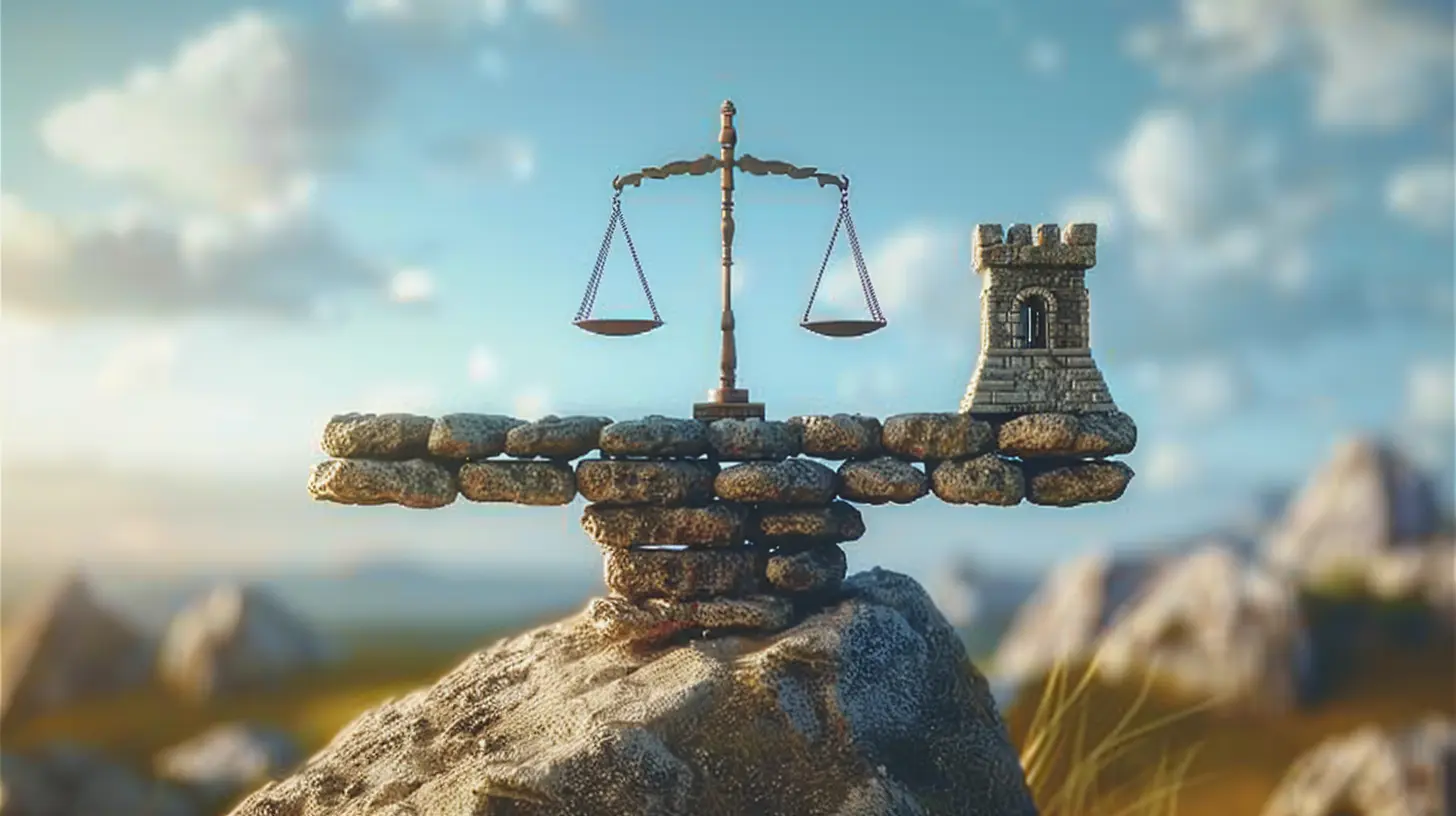How Game Balancing Shapes the Player Experience
1 October 2025
Game balancing might sound like one of those behind-the-scenes dev tasks that only hardcore gamers obsess over, but the truth? It impacts every single player, from casual mobile gamers to esports pros. Whether you're landing your first headshot in an FPS or grinding for loot in a dungeon crawler, the invisible hand of balance is guiding everything. It's like the heartbeat of a game—even if you can't see it, you'd 100% notice if it skipped a beat.
So, let's peel back the curtain on how game balancing actually shapes the way we feel and think while playing, why it matters way more than most realize, and how it's both an art and a science.
What Is Game Balancing, Really?
Okay, first things first—what exactly is game balancing?In the simplest terms, it's when developers tweak and fine-tune the game's elements to make sure no single feature, strategy, character, or team becomes totally overpowering or, on the flip side, useless.
Ever picked a character in a fighting game only to lose every round because your opponent has a move that’s practically a one-hit KO? That’s bad balancing.
Balancing is about fairness, but not just in a justice sense—it’s about perceived fairness too. It’s about making sure that you as a player feel like every choice you make matters and that you can win (or lose) because of your skill, not because the odds were stacked against you from the start.
Balancing Isn’t Just Numbers—It’s Psychology
Sure, there are a lot of numbers behind balancing—damage-per-second (DPS), cooldown timers, stat boosts, etc.—but it's not all spreadsheets.Balancing taps deep into player psychology. We crave a challenge, but we also crave the possibility of success. That sweet spot between too easy and insanely hard? That's where the magic happens.
Think about this: if a game is too easy, we get bored. Too hard, and we rage-quit before finishing the tutorial. When done right, balancing creates a “just one more try” loop we can’t escape. It’s like the Goldilocks zone of gaming.
The Role of Game Balancing in Competitive Games
Nowhere is balancing more vital than in competitive games. We're talking MOBAs like League of Legends, hero shooters like Overwatch, and battle royales like Fortnite.Here’s the thing: in competitive scenes, players will figure out what's broken. And they’ll exploit it. The meta (short for “most effective tactic available”) constantly shifts based on how balanced—or unbalanced—characters, weapons, and mechanics are.
Remember the infamous “Goats” comp in Overwatch? It dominated the meta for months because it was simply the strongest setup with little counterplay. That kind of imbalance can make a game stale, predictable, and frustrating for both players and viewers.
Balancing in these games often means:
- Nerfing overpowered characters or items
- Buffing underused ones
- Reworking mechanics entirely
- Listening to player feedback and data
And it doesn’t stop after launch—balance is an ongoing process. That's why many games have seasonal updates, patches, and reworks. It’s like tending a garden: constant pruning is required to keep it thriving.
Single-Player Games Need Balance Too
You might think, “Well, I don’t play competitive games, so balancing doesn’t really affect me.” Wrong.Single-player games rely on balance just as much—it's just applied differently.
Take Dark Souls, for example. The game is hard, no doubt. But never impossible. Every enemy and every weapon is meticulously balanced to challenge you without making you feel cheated. You die a lot, sure, but when you finally beat that boss? Oh man, that rush is unbeatable.
Even games like The Witcher 3 or Mass Effect need tight balancing. You don't want to get an ability that turns you into a god halfway through the game. On the flip side, if you’re stuck with weak abilities that barely do anything, the sense of progression gets lost.
Balance in single-player games is about maintaining a sense of empowerment without breaking immersion. You want to feel stronger as you progress, but not invincible. That tension keeps you hooked.
Balance vs. Fun: The Eternal Tug-of-War
Let’s be real—perfect balance doesn't always equal fun. Sometimes, making a game “technically fair” can also make it, well... boring.Some developers intentionally leave in certain overpowered combinations or funny glitches because they add charm or excitement. It’s part of the game's flavor. That’s why Skyrim lets you become a stealth archer who can one-shot dragons if you want to. Is it balanced? Not really. Is it fun? Absolutely.
The best games are the ones that know when to bend the rules just a little bit without flipping the table.
So yeah, there's a fine line. Balance is important, but sometimes breaking the balance in small, controlled ways can make a game more enjoyable, especially in sandbox or open-world games.
How Developers Tackle Balancing
Balancing sounds like a nightmare to manage, right? That’s because—spoiler alert—it kind of is. Here's how developers actually wrestle with it:- Internal Playtesting: Dev teams play their own game (a lot) and take notes on what feels off or frustrating.
- Data Analytics: This is the math side of things—tracking win rates, pick rates, damage outputs, etc. If one character has a 70% win rate and is picked 90% of the time, that’s a red flag.
- Community Feedback: Forums, Discords, Reddit—developers watch them all. Players often find balance issues faster than the devs do.
- Patch Cycles & Seasons: Developers often roll out updates in cycles to introduce changes gradually and test how the meta shifts in response.
It’s a delicate dance. Over-nerf a character, and now they’re useless. Over-buff them, and they dominate everything. It’s like trying to keep a dozen spinning plates from crashing down.
When Imbalance Is Intentional
Not all imbalance is bad. Sometimes, devs want asymmetry in design—it adds depth and replayability.Take StarCraft, for instance. The game's three factions (Terran, Zerg, Protoss) are completely different. Different units, different economy systems, different strategies. Yet, through years of fine-tuning, the game became one of the most balanced RTS titles ever—even with those major differences.
Imbalance, when done intentionally and carefully, can create unique playstyles and experiences. It adds spice. Imagine if every character in a fighting game played exactly the same. Snooze-fest, right?
The key is manageable imbalance—where differences create strategic depth, not dominance.
The Emotional Impact of Balance
Let’s not forget how unbalanced games feel. Emotional response is a huge part of player experience.If you feel like you lost because of imbalance? That frustration lingers. It turns excitement into resentment. On the other hand, when a game feels fair, even losses can be motivating. You’re more likely to say, “One more try,” instead of rage-quitting for good.
Good balance supports:
- Player agency: You feel like your decisions matter.
- Engagement loops: You stay hooked, trying to master mechanics.
- Long-term playability: You’re more likely to stick with the game over time.
So yeah. Balance isn’t just math. It’s emotion, satisfaction, and flow state all rolled into one.
Games That Nailed (or Flubbed) Balance
Want some real-world examples?Nailed It:
- Rocket League: Simple mechanics, but every car and hit feels fair.- Counter-Strike: Global Offensive: Despite old-school graphics, its competitive balance is razor-sharp.
- Hades: A rogue-lite where every weapon and build has strengths without ever feeling overpowered or broken.
Flubbed It (At First):
- Cyberpunk 2077 (Launch Version): Weapons and abilities could be game-breaking. Some enemies were absurdly OP. The patchwork came later.- Battlefront II (2017): Remember that “pay-to-win” controversy? Players could literally buy advantages. Big oof.
- Diablo III (Auction House Era): Real-money auction house threw the game’s difficulty and progression off-balance. Blizzard eventually removed it.
These examples show how impactful balance—good or bad—can be. It shapes reviews, player retention, and the game’s legacy.
So, Why Should You Care About Game Balancing?
If you're reading this, you're probably a gamer. Maybe casual, maybe hardcore. Either way, balancing matters to you because it directly affects how much fun you're having.Think about it: every time you feel cheated in a match, every time a game rewards skill rather than luck, every time you say, “That was tough, but fair”—that’s balance at work.
And now that you're aware of it, you'll start to notice it everywhere. That’s the beauty of understanding these hidden mechanics—they make you appreciate the craft behind the chaos.
Final Thoughts
Game balancing is one of those things you might not fully notice when it’s done right—but boy, you’ll definitely feel it when it’s not.It’s the invisible glue that holds everything together, the quiet architect behind fair fights, meaningful choices, and unforgettable gameplay moments. It’s what makes you hit "continue" instead of "quit."
So next time you’re in a heated match, or trying to beat that one stubborn boss, take a second to tip your hat to the balance team. They’re the unsung heroes making sure your gaming experience is more than just fun—it’s unforgettable.
all images in this post were generated using AI tools
Category:
Game BalancingAuthor:

Pascal Jennings
Discussion
rate this article
1 comments
Uzi McFarlane
Great insights! Game balancing truly impacts how we connect with games, shaping our experiences and enjoyment. It's fascinating to see how developers strive to create that perfect level of challenge and engagement. Thanks for sharing!
October 3, 2025 at 2:50 AM

Pascal Jennings
Thank you! I'm glad you found the insights valuable. Game balancing is indeed crucial for enhancing player enjoyment and engagement!


